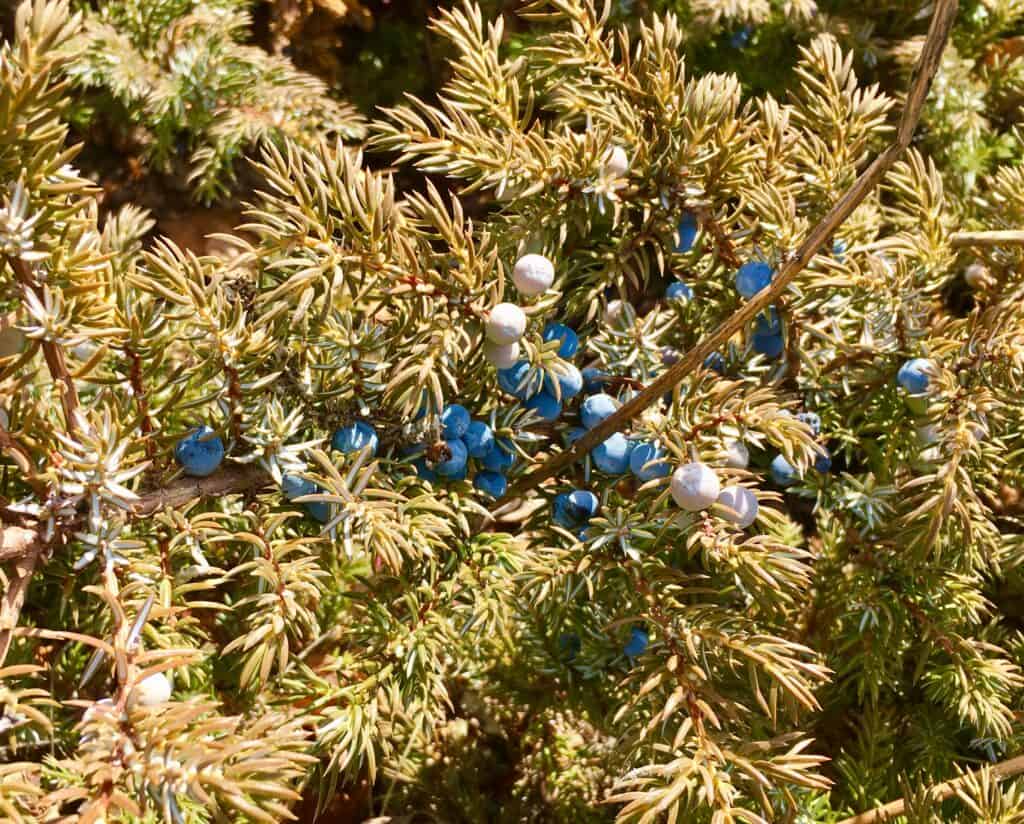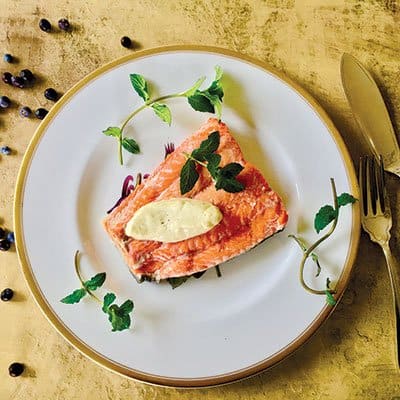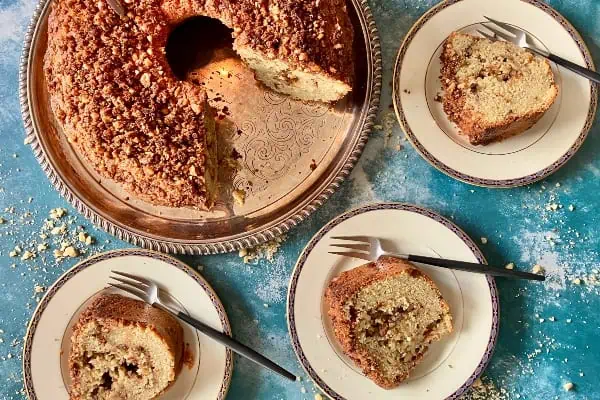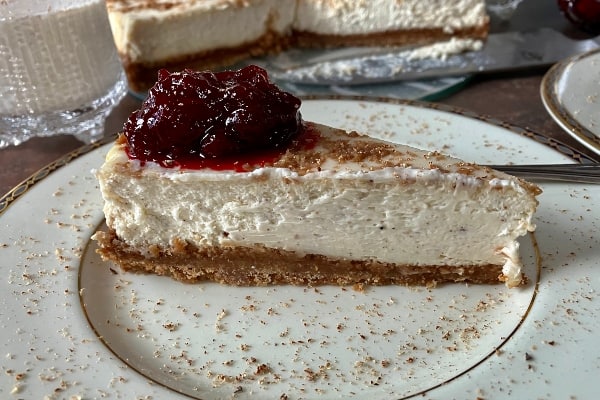In my Yukon world, ‘Juniper’ is a name that has been given to kittens and new babies; in the world of musician Donovan Leitch it is affixed to the name Jennifer in a love song to a person who lives upon a hill. The wild juniper berry grows on shrubs often found on Yukon hillsides and is so pretty it’s no surprise people want to bestow its name upon beings they love.
On any one bush you will see white, green and blue juniper berries—this is the berry in different stages of ripening. The ripe ones are blue, and if you’re picking from the common juniper (Juniperus communis) you want to be wearing thin and flexible gloves, because the needles are prickly and you will soon tire of sore fingers. The needles of spreading or creeping juniper (Juniperus horizontalis) are not prickly. You can pick either berry year round.
The berries of both bushes are edible and have a fine, sharp, bracing flavour. Juniper is used to flavour gin and game dishes; crushed berries are excellent in rubs for hot-smoked salmon or braised or roasted meats. Sometimes I toast the berries in a dry frying pan, crush them and add them to cheddar scones, or combine them with spruce tips and Labrador tea for an energizing tisane.
Indigenous people in Canada and the Yukon have many uses for juniper berries, from cold, cough and congestion remedies to laxatives to appetite stimulants. Burning juniper branches helps to keep away the insects, and is a wonderful way to infuse grilled fish with flavour.
Lately I’ve been using the berries in aioli, that garlicky mayonnaise so good with salmon or steamed vegetables. Last year I had a series of mayonnaise fails, which has made me a more patient person. You really do have to add the oil drop by drop at first. If your mayonnaise fails, try beating in a teaspoon of hot water (Joy of Cooking method), or with your eggy whisk and a clean bowl, beat ½ tsp hot tap water very quickly and when it’s frothy add the failed mixture drop by drop (chef Samin Nosrat’s method) or, start all over again with a new yolk and add the failed mixture drop by drop (both methods). The blender or food processor method is easier on the wrist—no whisking. For best results have egg and oil at room temperature. Good luck!

Juniper is used to flavour gin and game dishes; crushed berries are excellent in rubs for hot-smoked salmon or braised or roasted meats – Photos: Miche Genest

Juniper Aioli (Samin Nasrat method)
In this version, based on Samin Nosrat’s method in Salt, Fat, Acid, Heat you first make the mayonnaise and then add the other ingredients.
Ingredients
- 1 egg yolk
- 1/3 cup grapeseed oil
- 1/3 cup olive oil
- 2 tsp Dijon mustard
- 1 tsp garlic
- 1 tsp dried juniper berries, crushed to a coarse powder
- 2 tsp lemon juice
- ½ tsp sea salt
- 2 tsp lemon zest
Instructions
- Dampen a tea towel and coil it into a ring tightly on the counter around your bowl, tilting the bowl to one side. This allows the mixture to accumulate on the tilted side. Whisk yolk until thick and lemony yellow.
- Combine oils in a measuring cup. Add 1/3 cup oil to the egg yolk, drop by drop, whisking constantly. If at any point the yolk seems not to be absorbing the oil, stop adding oil and just whisk until oil is fully incorporated. Then resume, drop by drop.
- Once the mixture has emulsified and thickened, add the remaining 1/3 cup of oil in a thin drizzle, whisking the whole time until all the oil has been added.
- Dissolve salt in lemon juice and stir into mayonnaise, along with garlic, juniper, and mustard.
- Store in the fridge and use within three days.




